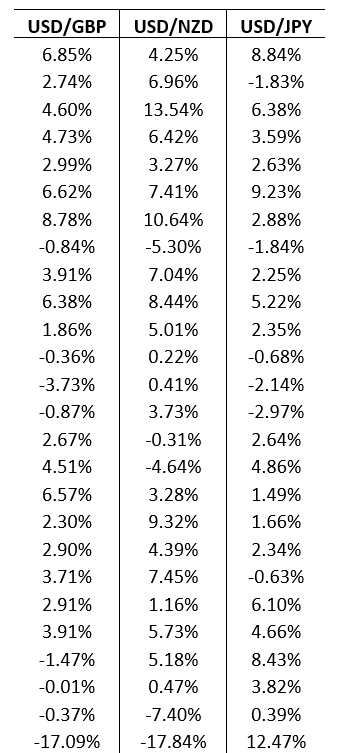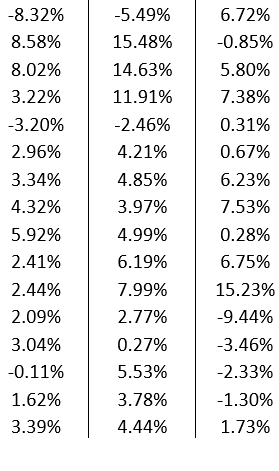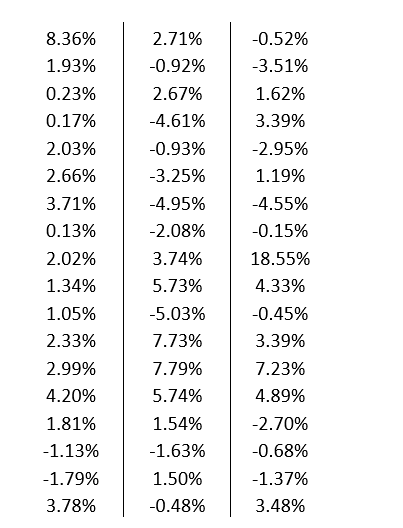Essay
A branded store has outlets around the world that generates profit in the British pound, the New Zealand kiwi, and the Japanese yen. At the end of each quarter, the store converts the revenue from these three international outlets back into U.S. dollars, exposing itself to exchange rate risk. The current exchange rates are US$1.56 per £1, US$0.85 per NZD$1, and US$0.02 per ¥1. The management of the store wants to construct a simulation model to assess its vulnerability to uncertain exchange rate fluctuations. The quarterly profits earned in British pounds, New Zealand kiwis, and Japanese yen are £150,000, NZD$200,000, and ¥9,000,000, respectively. The data is given below.



a. If exchange rates stay at their current values, what is the total quarterly profit in U.S. dollars?
b. Model the uncertainty in the quarterly changes of the exchange rates between U.S. dollars and British pounds, New Zealand kiwis, and Japanese yen using a SLURP. Use your simulation model to estimate the average total quarterly profit in U.S. dollars. What is the probability that the total quarterly profit will be lower than the answer in part a?
Correct Answer:

Verified
a. If exchange rates do not change, tota...View Answer
Unlock this answer now
Get Access to more Verified Answers free of charge
Correct Answer:
Verified
View Answer
Unlock this answer now
Get Access to more Verified Answers free of charge
Q9: A set of values for the random
Q13: The random variables corresponding to the interarrival
Q18: A store is offering a discount on
Q20: The range of computer-generated random numbers is
Q27: A description of the range and relative
Q28: In a _, a random variable can
Q29: A disadvantage of the simple what-if analyses
Q37: The process of determining that a computer
Q47: In a(n) _ relationship between two quantities,
Q50: Which of the following is true of